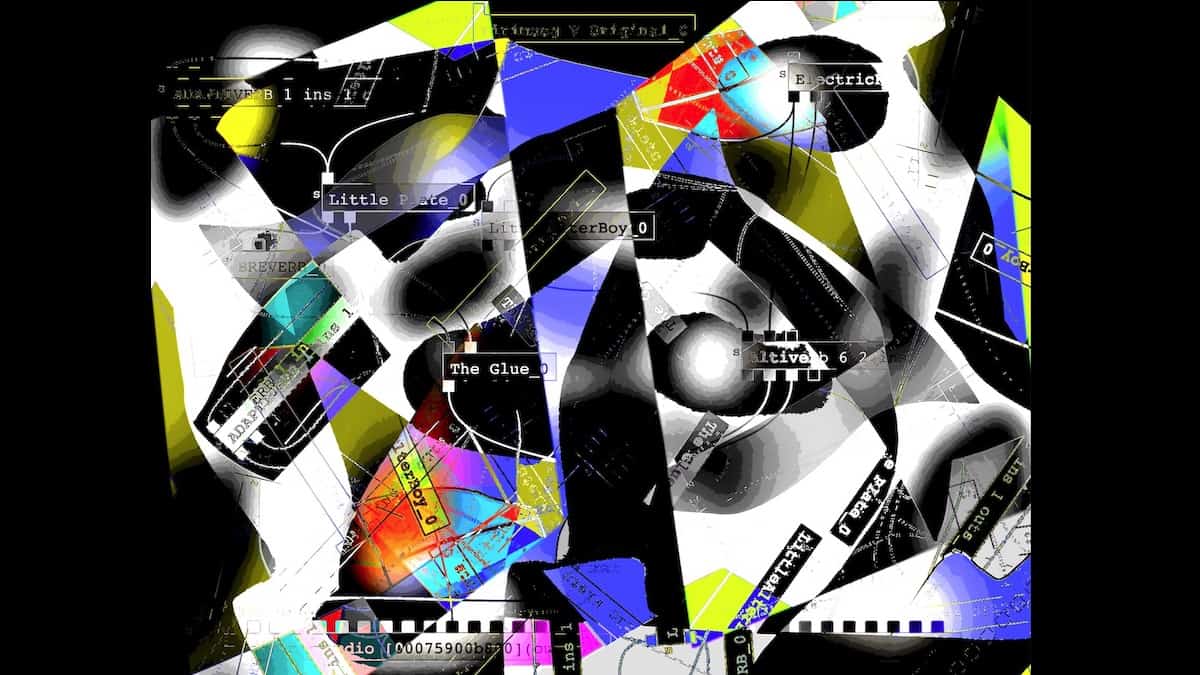Features
Your DAW as a Modular System?

A different way of approaching your digital audio sequencing software and its plug-in processors
There’s an interesting feature in the forthcoming CLAP open plug-in format: polyphonic modulation automation. To illustrate it, their demo video shows an ADSR mapped to a filter’s cutoff frequency and an LFO mapped to vibrato depth.
That caused a lightbulb to go off: isn’t that how musicians work with modular synths – one parameter modulates another? Obviously you’re not cabling one Eurorack module into the next, but you can create the same effect.
And then a second lightbulb went off, which is always dangerous: you can emulate much of that today in any DAW. CLAP does it more elegantly, but every DAW lets you automate plug-in parameters; you just copy/paste “monophonic” plug-in automation data from one parameter to another.
It’s just a different way of approaching your DAW. The interface isn’t as cool as patched modules, but then you can use as many plug-in processors as your computer will run. And of course you can combine hardware and software.
Here are some basic equivalents to convey the concept.
Oscillators: The sound source is any sound in your DAW, whether an audio track or a synth. They all come with a variety of synths.
Envelopes: If your “oscillator” isn’t a synth with its own envelope generators, there are several parallels. The most obvious one is simply to ride the volume manually, whether you’re using MIDI CC7 (volume) or just automating the level using the DAW’s mixer.
You can also use dynamics processors. Gates all have attack, hold, and release settings – your 3-stage envelope.
Logic Pro X even includes an Enveloper plug-in that does exactly what the name implies.
Filters: Every DAW comes with at least one filter plug-in. MOTU Digital Performer has a multimode filter, for example.
LFOs: Modulation is a bread and butter plug-in category in every DAW. These processors typically do more than a simple synth LFO.
Envelope followers: A processor’s sidechain input is the DAW replacement for an envelope follower. In this setup, a processor takes its cues from the signal in its side chain (generally following the amplitude like an envelope follower does), then applies the processing to the main signal going through it.
And so on.
Some ideas
Special thanks to Synth and Software contributor Mark Jenkins for lending us his brain for this story.
– Making effects plug-ins more powerful with added modulation, for instance turning a short delay into a chorusey, modulated delay.
– Modulating settings of multiple phasers to create groups of modulated “singing” phasers.
– New types of modulation added to virtual FM synthesizer sounds to gain greater and faster polyphonic control over FM synthesis sound creation.
– More powerful options in step modulation of filters, so you could write different patterns of modulation levels on each voice playing.
– Bringing deep polyphonic glide to plug-ins that don’t have it, giving Yamaha CS80-style expression to quite different types of synth.
– Aftertouch routed to wavetables per voice, so you get different wavetables scanned through on each note played. Same with velocity. Heard on PPGs probably, but otherwise not common.
– Envelopes inversely routed to reverb levels, so notes become more reverberant as they die away Pitch bend similarly.
– Paste a regularly varying volume automation track, made to create tremolo, to make vibrato, pan, and other types of modulation.
– Take per-channel volume automation and paste it to several bands of a graphic eq to make anything from filter sweeps to comb filter-style phasing.
– Use your effects bypass on/off automation to switch on and off other types of modulation or filtering.
To be clear, the idea of stringing together different “objects” graphically – sound sources, processors, etc. – isn’t new. For example, Plogue Bidule has been doing this for years, as has the Logic Environment.
But it’s a different way of thinking that may help you come up with interesting ideas.
Please let us know what you come up with. Happy modularing.




















